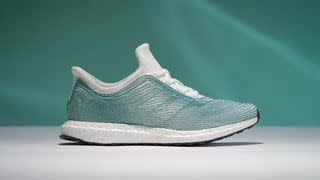Plastic pollution in the ocean is officially everywhere, even Antarctica

Given Antarctica's extreme location on the bottom of the Earth, scientists long believed the continent was free from the plastic pollution tarnishing the rest of the world.
But not even this remote expanse is safe from our crap, a new study shows.
Plastic debris was far worse in the Antarctic than expected, researchers from University of Hull in England and British Antarctic Survey said this week. Levels of microplastics in the region were five times higher than what you'd normally expect to find from local sources, such as research stations and ships.
SEE ALSO: A 'conveyor belt' of plastic is polluting the Arctic Ocean
"Antarctica is thought to be a highly isolated, pristine wilderness," Catherine Waller, the study's lead author and a marine biologist at the University of Hull, said in a statement. "The ecosystem is very fragile."
Microplastics are particles smaller than 5 millimeters in diameter that are found in many household items, including shampoo, toothpaste, and polyester clothing. Particles are also created when larger debris — such as soda bottles, toys, and fish netting — breaks down.
The study, published this week in the journal Science of the Total Environment, suggests that much of the plastic debris is coming from outside the Antarctic. In the surrounding Southern Ocean, for instance, tourism, fishing, and scientific research activities all contribute to plastic pollution.
It could be particles from these plastics are turning up in the pristine polar wilderness via the Antarctic Circumpolar Current, which flows clockwise around the continent and was historically thought to be impenetrable, researchers said.

Image: Catherine Waller/university of hull
Scientists estimate that up to 1,100 pounds of microplastics from personal care products and up to 25.5 billion clothing fibers enter the Southern Ocean per decade. While that's "negligible" when spread across the ocean's 8.5 million square miles — or 5.4 percent of the world's oceans — it represents a rising threat to local ecosystems.
Seals, penguins, and other wildlife can eat plastic debris and choke, or become entangled. Tiny krill and other zooplankton also gobble microplastics, introducing harmful chemicals into the food chain. However, it's still unclear how that plastic diet affects marine animals in the Southern Ocean, said Claire Waluda, a co-author of the study and a biologist at British Antarctic Survey.
Researchers said they will continue monitoring plastic pollution in the region, along with other rising threats to the ecosystem, including the effects of human-driven global warming and an influx of non-native species.
"This paper represents an excellent first step towards recognizing the presence of microplastics in Antarctica and allows us to call for international effort in monitoring the situation whilst it is still in its earliest stages," Waluda said in a statement.
WATCH: These Adidas sneakers are made of plastic garbage found in the ocean

